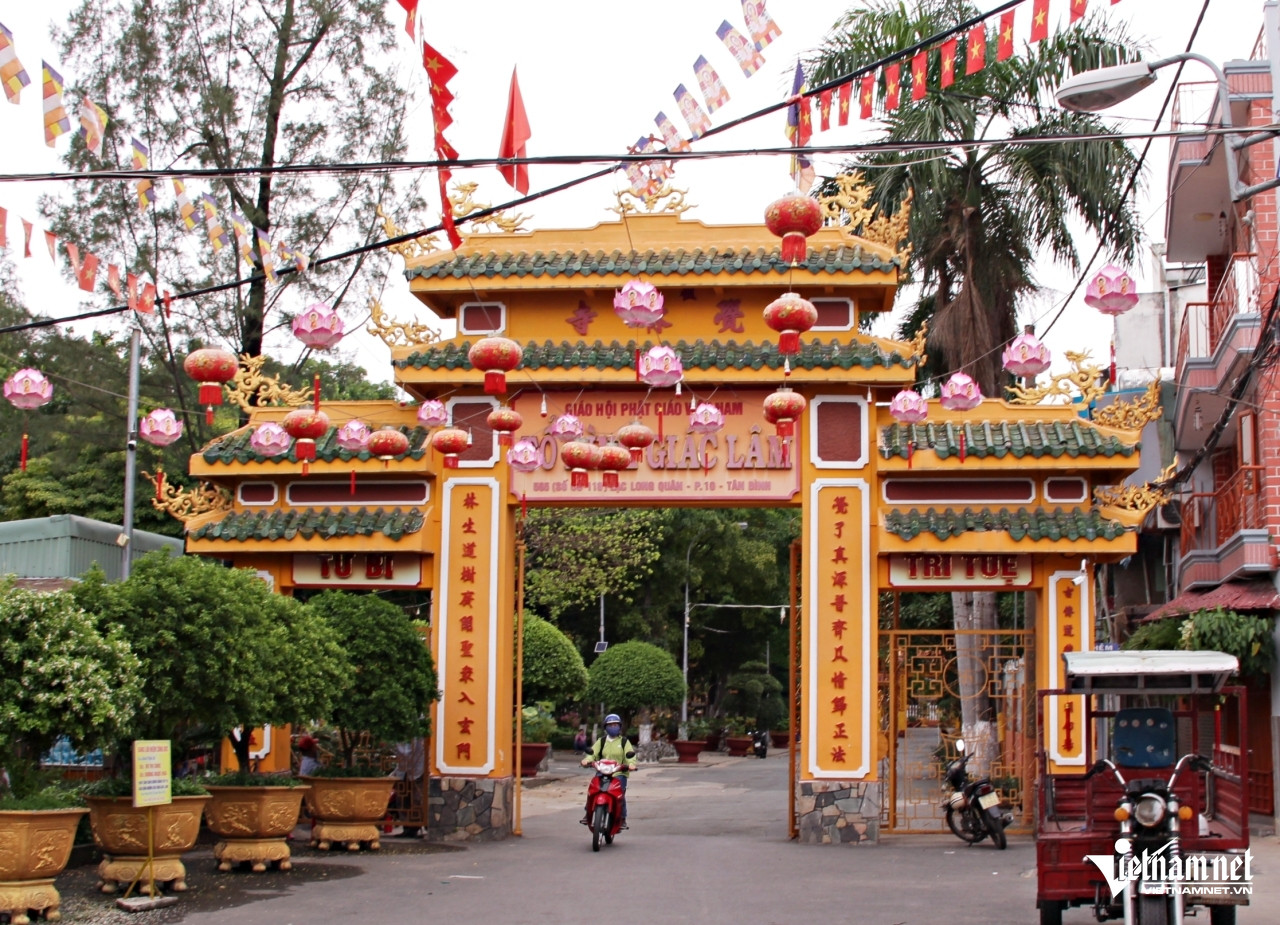
The majestic triple gate of Giac Lam Pagoda. Photo: Ha Nguyen
The Nearly 300-Year-Old Pagoda
Nestled within a spacious compound, shaded by lush greenery, Giac Lam Pagoda, also known as To Dinh Giac Lam (in Tan Binh District, Ho Chi Minh City), exudes an atmosphere of serenity and tranquility.
Passing through the grand triple gate, visitors are greeted by the towering stupa that soars above the temple complex.
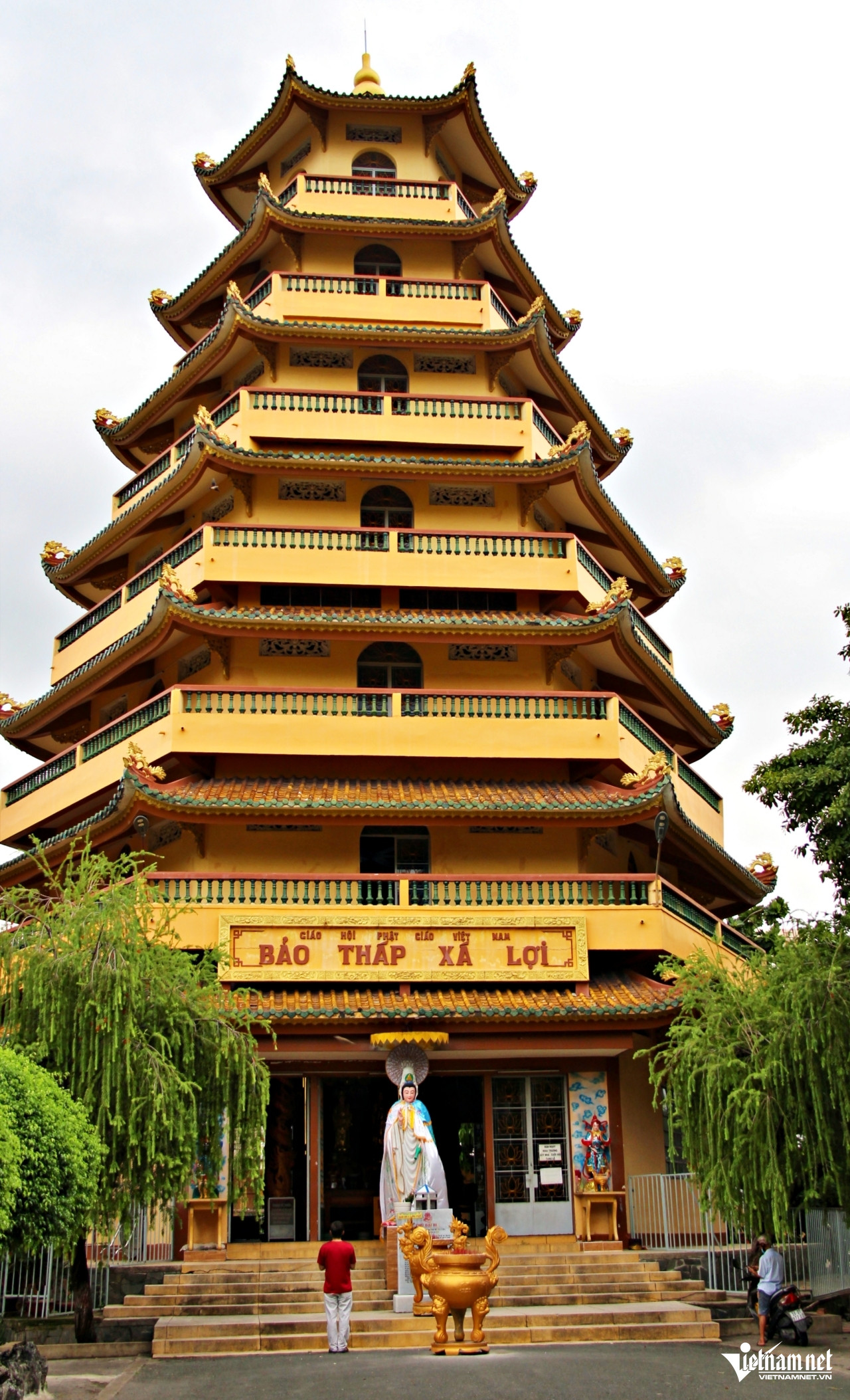
The lofty stupa of Giac Lam Pagoda. Photo: Ha Nguyen
Unlike many other ancient pagodas, the double gate of Giac Lam Pagoda features a unique blend of cultural influences, with two lion statues guarding the corners of the gate in a style reminiscent of Western culture.
The double gate does not have a direct entrance to the main hall. Instead, visitors enter the pagoda through two smaller side doors.

The double gate of the pagoda. Photo: Ha Nguyen
According to historical documents, Giac Lam Pagoda was established in 1744 by Ly Thuy Long, a Minh Huong layman. The pagoda has also been known by other names, including Cam Son, Son Can, and Cam Dem. In its early days, the pagoda was a humble structure with thatched walls and a straw roof.
After its construction, Ly Thuy Long entrusted the care of the pagoda to Buddhist monk Thich Phat Y. Not long after, Thich Phat Y passed the responsibility of abbot to his disciple, Thich Vien Quang.
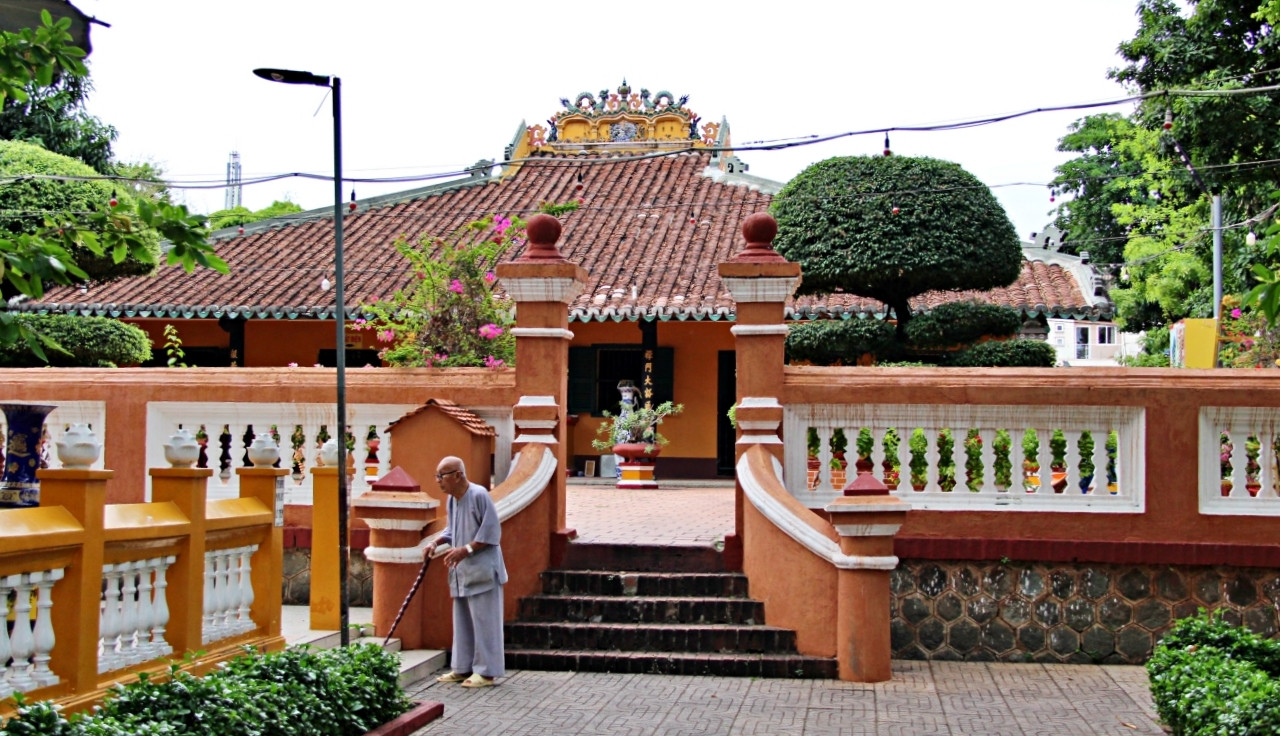
The entrance to the main hall of the pagoda. Photo: Ha Nguyen
Since then, Giac Lam Pagoda has undergone 11 abbacies and several major renovations. Today, the pagoda stands as one of the oldest temples in Ho Chi Minh City, with a history spanning nearly 300 years.
In her work, “Giac Lam Pagoda: A Historical and Cultural Relic,” Professor Tran Hong Lien writes, “The pagoda’s layout is in the shape of the letter ‘tam,’ which is believed to be a variation of the ‘inner public – outer national’ structure commonly found in ancient pagodas in Northern Vietnam.”
The roof of the pagoda is designed in the shape of a “banh it” (a type of Vietnamese cake), adorned with yin-yang tiles and intricate “long tranh chau” (two dragons playing with a pearl) motifs crafted from ceramic.

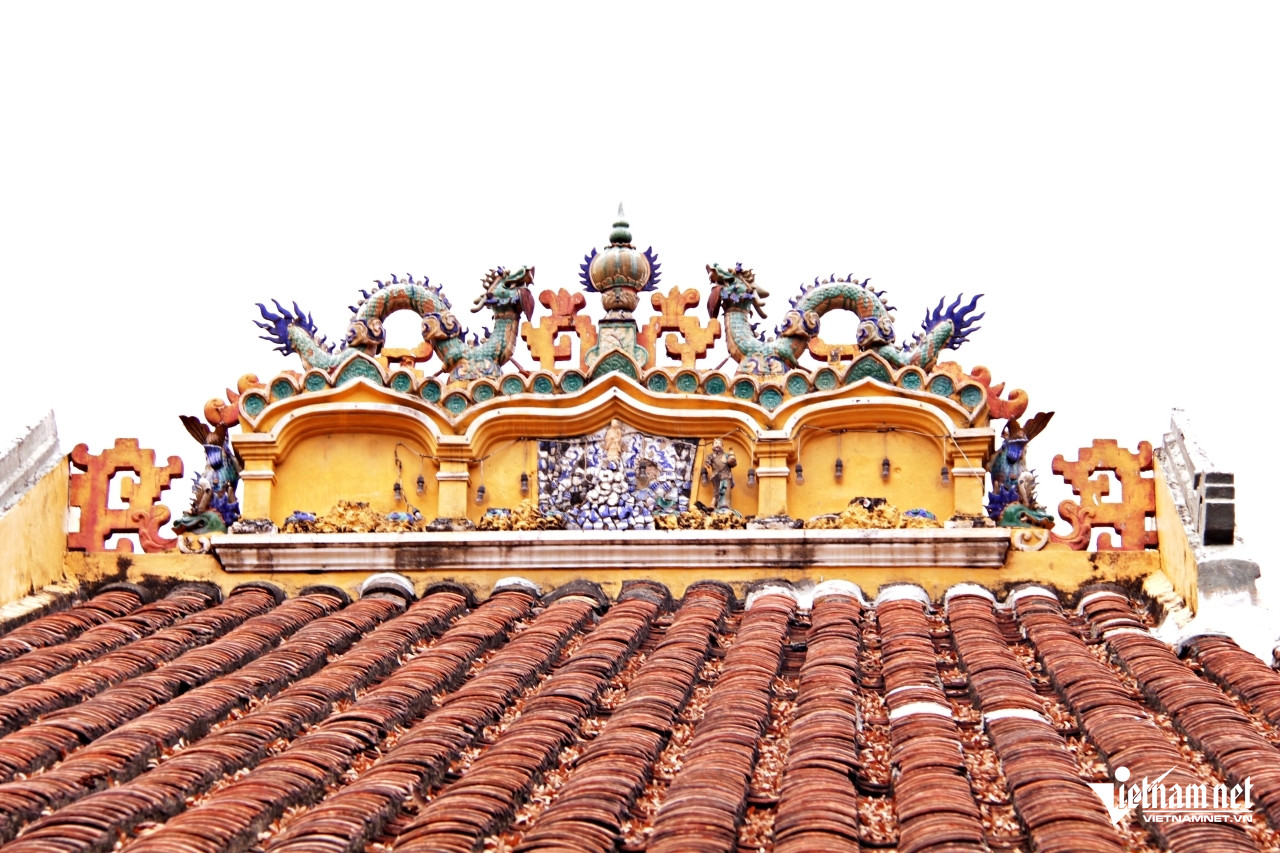
The yin-yang tiled roof with ceramic “long tranh chau” motifs. Photo: Ha Nguyen
The walls of the main hall and several other structures within the pagoda are adorned with over 7,000 antique porcelain plates, earning Giac Lam Pagoda the distinction of having the largest collection of decorative plates among Vietnamese pagodas.
The main hall of Giac Lam Pagoda follows a traditional architectural style, featuring a central hall with two flanking wings. Four main pillars, known as “tu tru,” support the structure, and the interior is arranged in the “tien bai Phat, hau bai to” style. Numerous wooden columns hang lienn doi (parallel sentences) and hoanh phi (horizontal lacquered boards) with golden lettering.

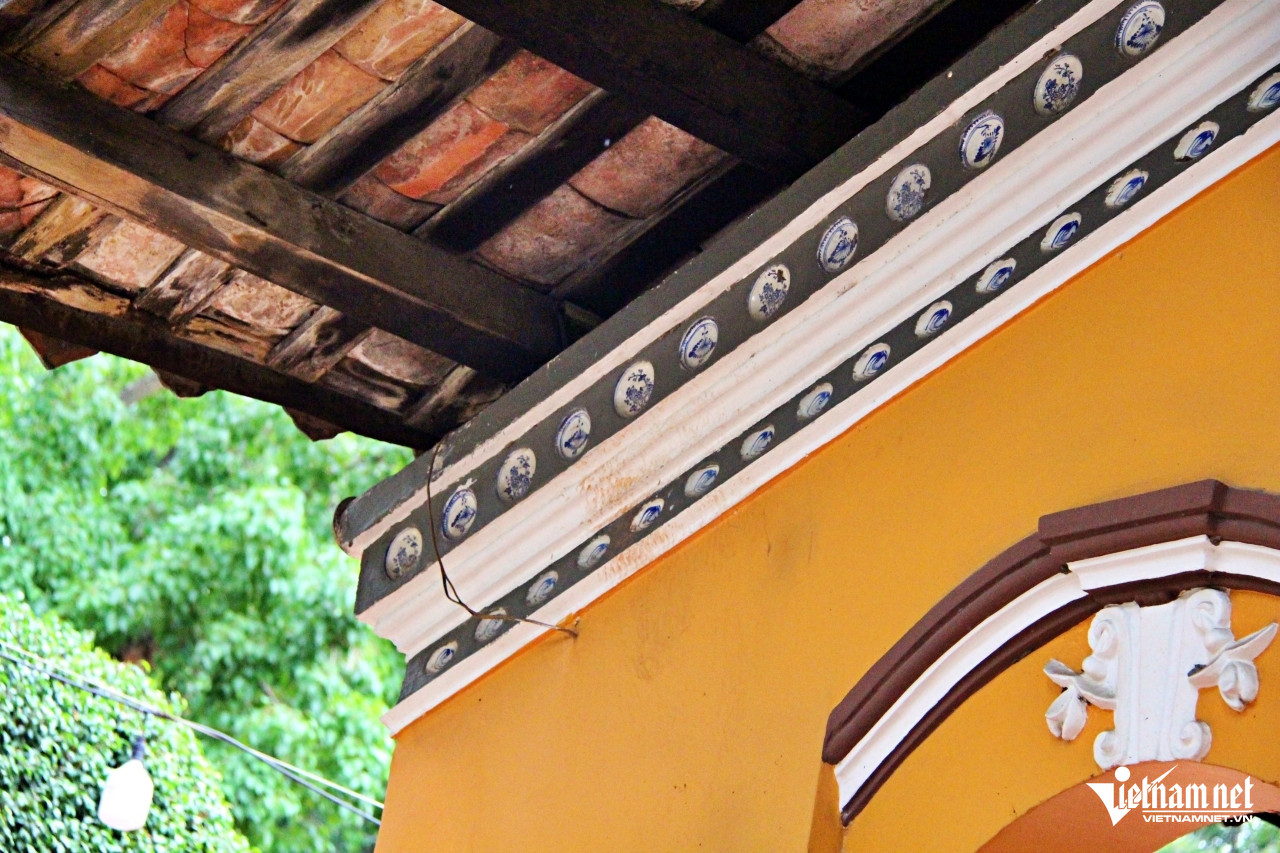
The walls of the main hall and other structures adorned with antique porcelain plates. Photo: Ha Nguyen
The main hall boasts an intricate system of densely arranged bao lam (wooden altar cabinets) featuring elaborate carvings and gold leaf embellishments. The themes depicted on these bao lam vary, showcasing a diverse range of artistic motifs.
Along the side walls of the main hall are statues bearing the patina of age. The central altar features a seven-tiered platform, upon which are placed statues of various Buddhist figures, including Amitabha Buddha, Sakyamuni Buddha, Maitreya Buddha, and the Five Holy Ones.
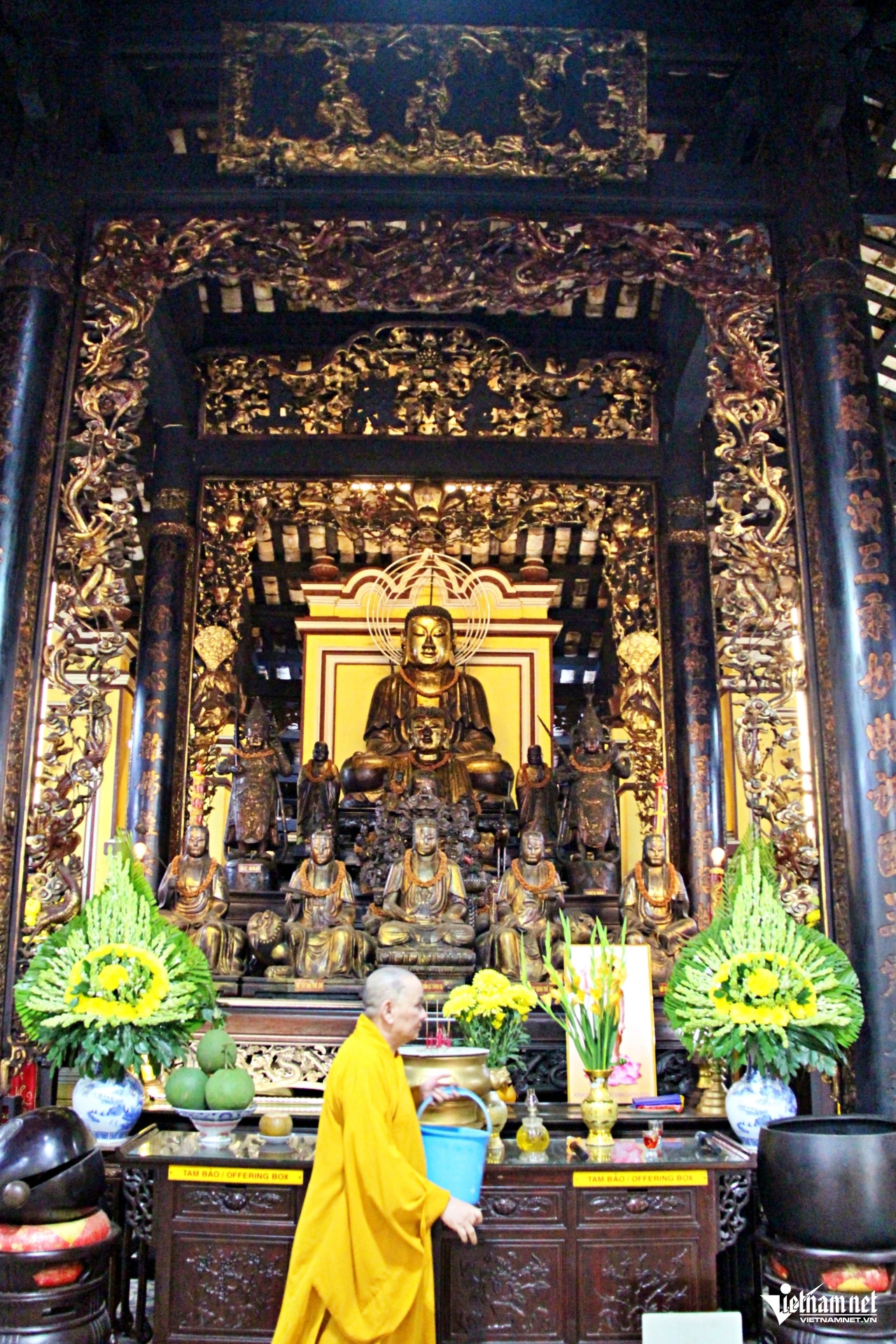
Intricately carved bao lam with gold leaf embellishments adorn the main hall. Photo: Ha Nguyen
A Hundred Golden Treasures
Beyond its architectural beauty, Giac Lam Pagoda is renowned for its extensive collection of ancient and rare statues. Currently, the pagoda houses 113 antique statues, most of which are made of wood, with only seven crafted from bronze.
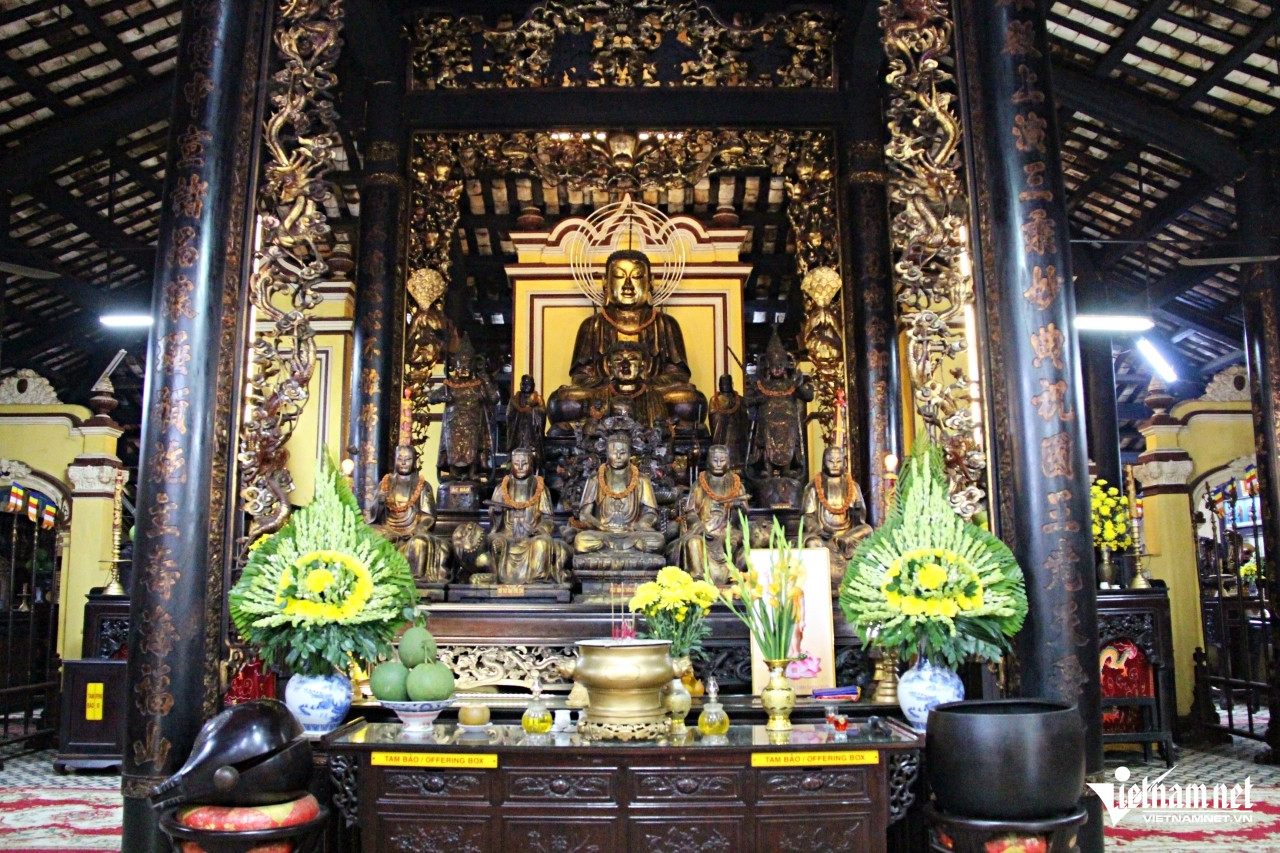
The main hall of Giac Lam Pagoda with its ancient statues. Photo: Ha Nguyen
Among the most notable statues are those of Amitabha Buddha, Sakyamuni Buddha, Maitreya Buddha, Mahasthamaprapta Bodhisattva, Avalokitesvara Bodhisattva, Ksitigarbha Bodhisattva, the Nine Dragons (cast in bronze), the Eighteen Arhats, the Ten Kings of Hell, Bodhidharma, the Dragon Kings, and the Five Holy Ones.
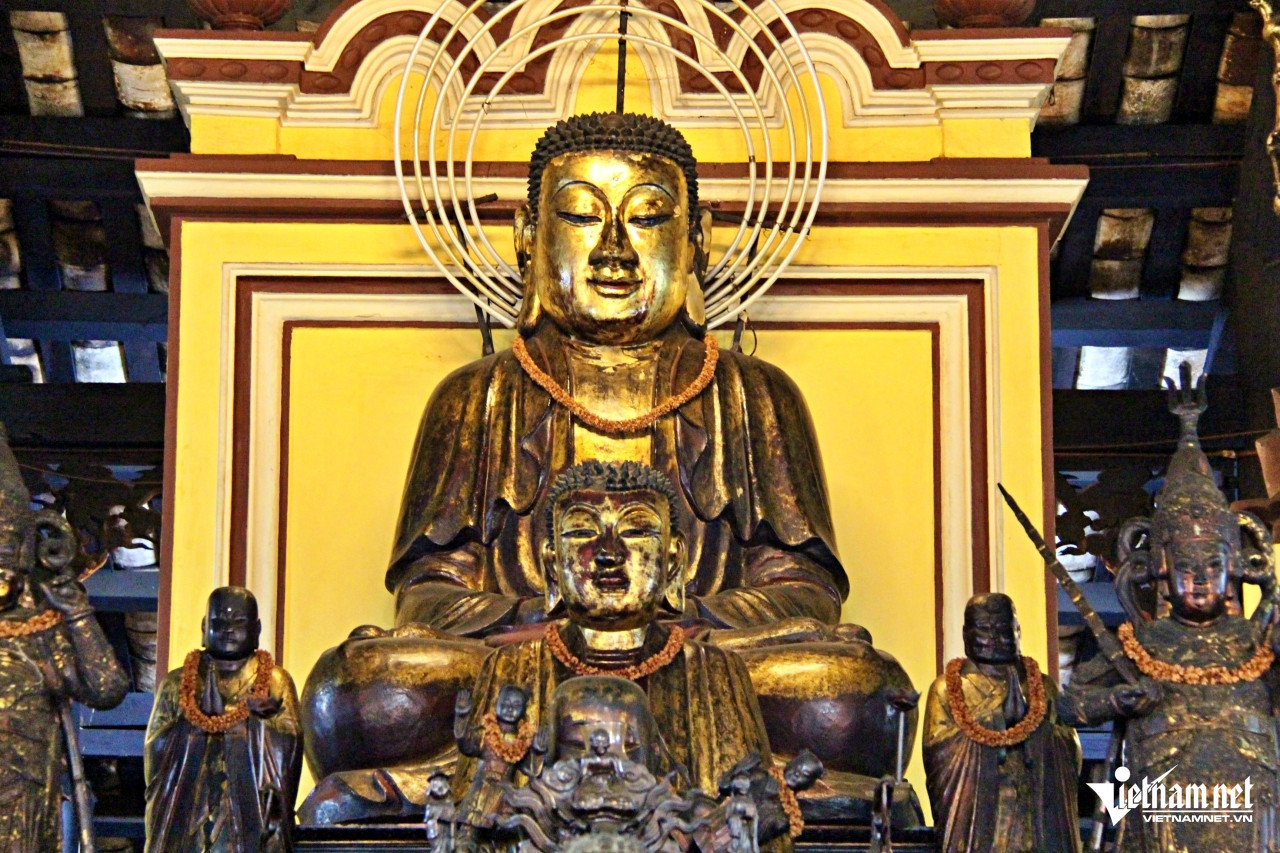
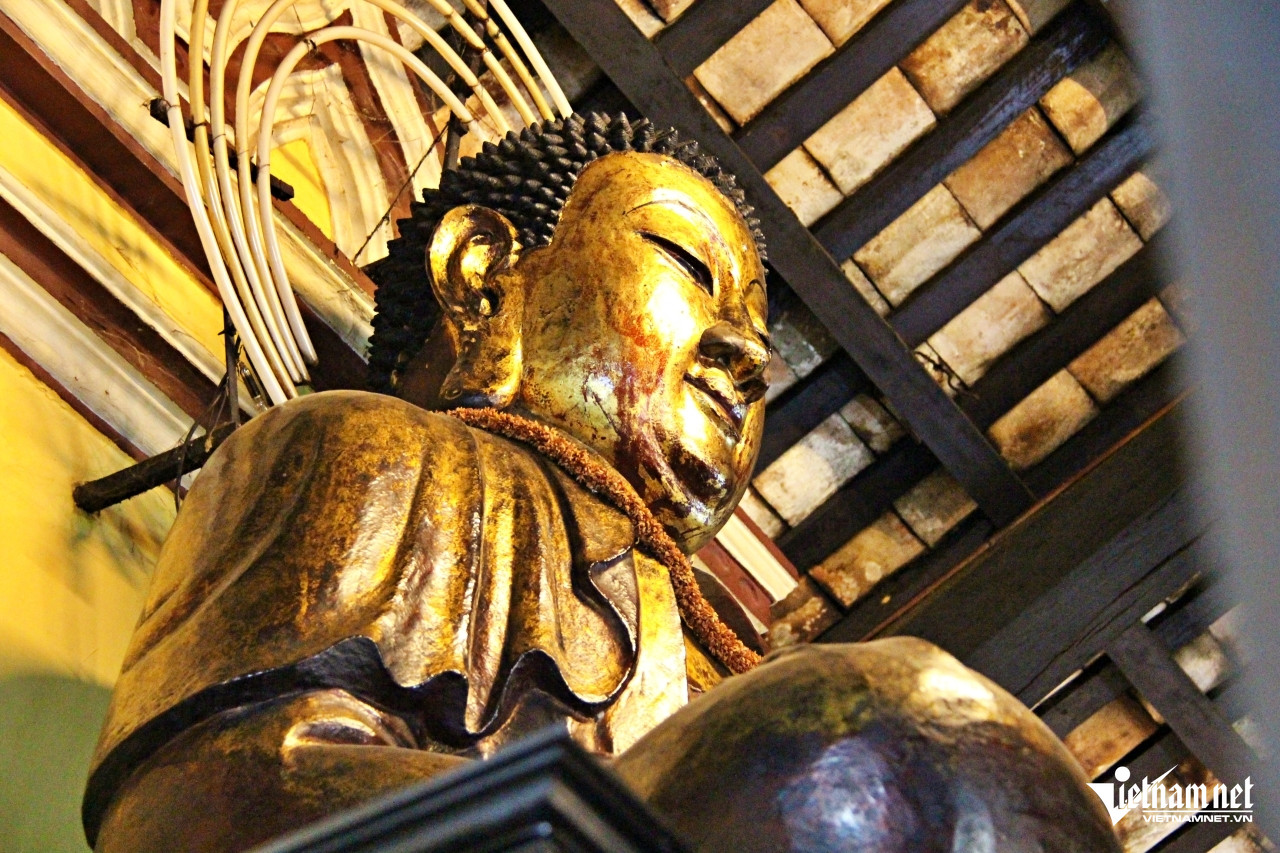
The large and majestic statue of Amitabha Buddha, adorned with gold leaf, takes center stage in the main hall. Photo: Ha Nguyen
Through her research, Professor Tran Hong Lien has determined that the statues in Giac Lam Pagoda date from different periods, mainly from the mid-18th century to the early 19th century.
Of particular significance is the set of five wooden statues housed in the pagoda. Crafted from mit nai wood (a large tree species reaching heights of 15-20 meters), these statues are coated in gold leaf and stand at a height of 80 centimeters. They are believed to date back to the 19th century.
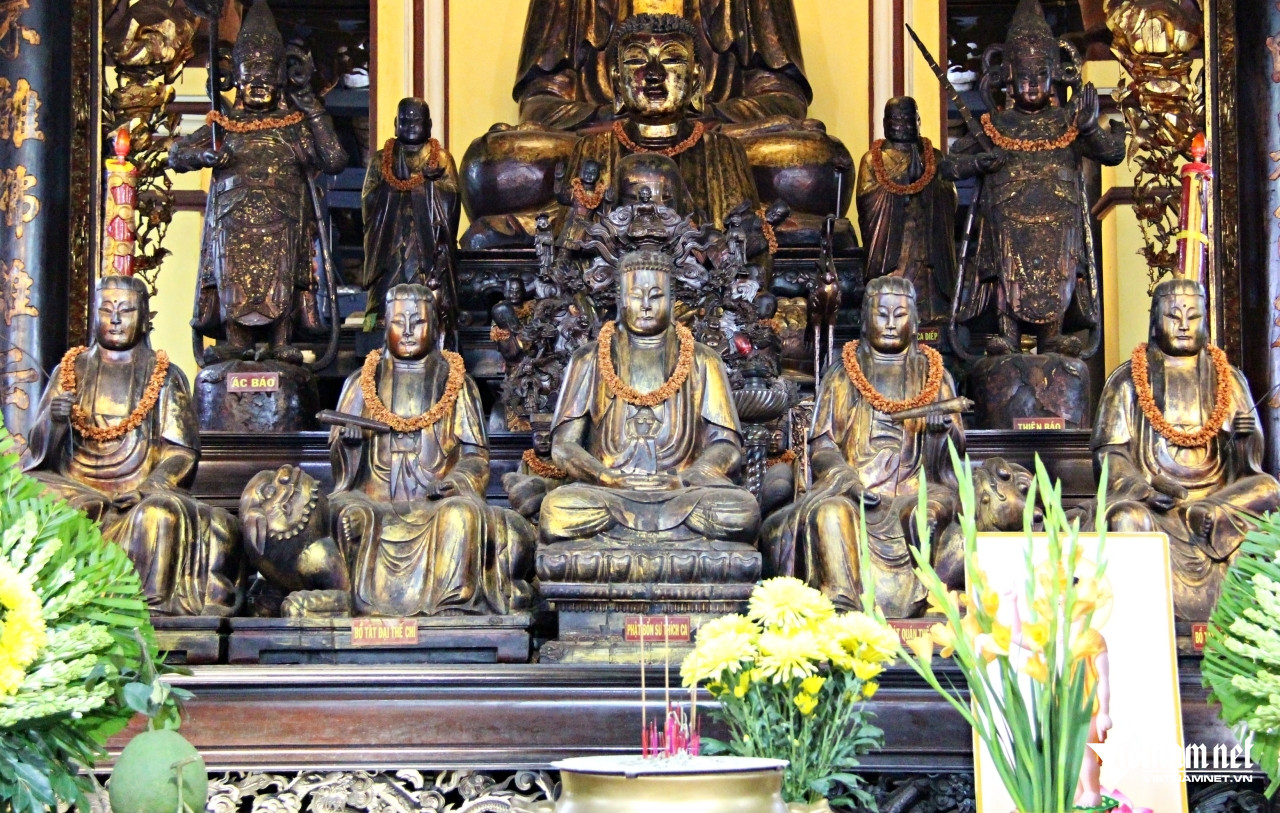
The unique set of five ancient wooden statues is considered a precious treasure of Giac Lam Pagoda. Photo: Ha Nguyen
This set of five statues is arranged in the main hall, with the statue of Sakyamuni Buddha taking center stage, seated on a lotus pedestal.
The remaining four Bodhisattva statues are each seated on the back of an animal: Samantabhadra Bodhisattva on an elephant, holding a pink lotus branch; Mahasthamaprapta Bodhisattva and Avalokitesvara Bodhisattva riding lions, the latter holding a scroll; and Manjushri Bodhisattva holding a如意branch and riding a lion. The animals are depicted in a reclining posture.
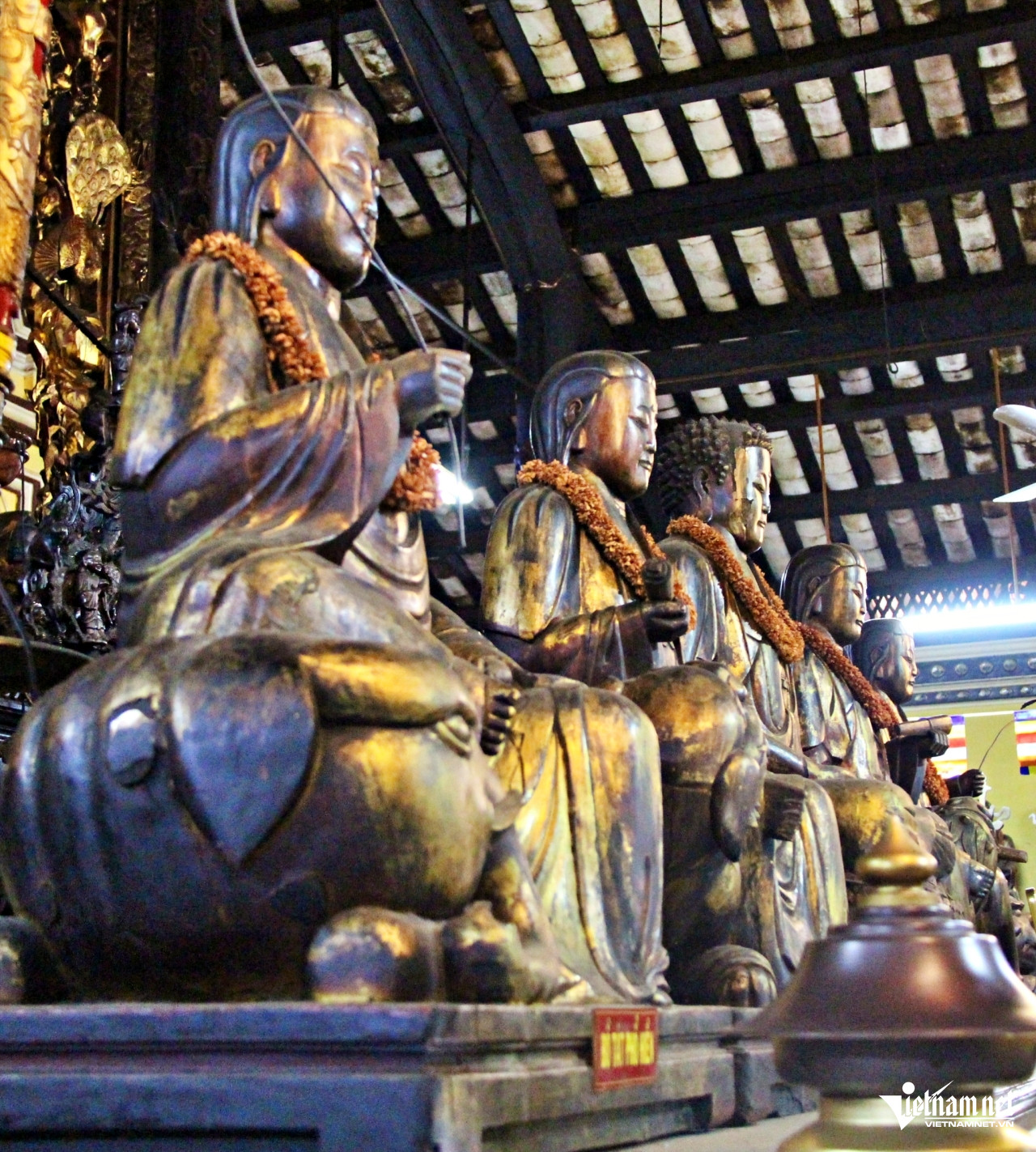
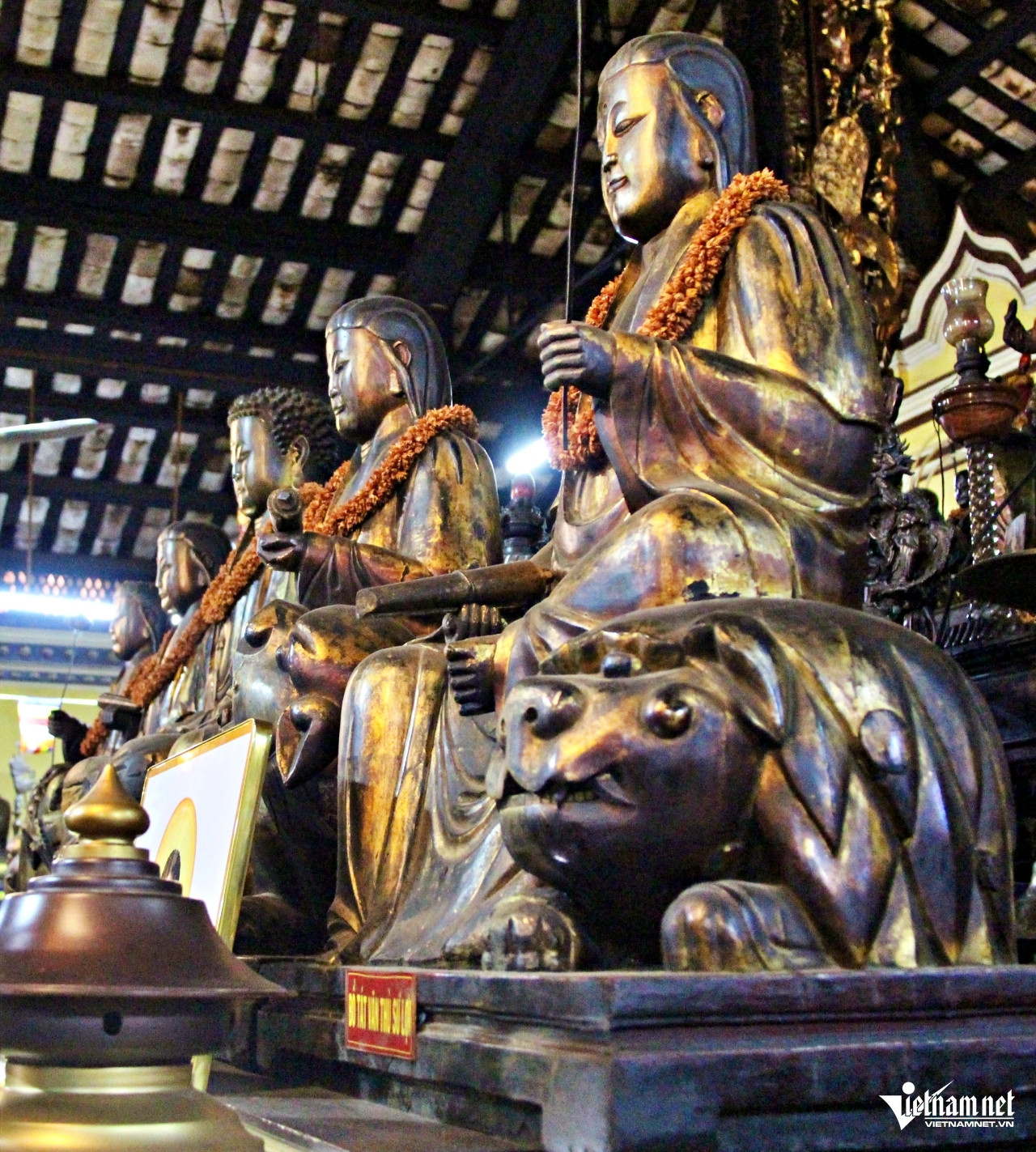
The set of five statues, coated in gold leaf and dating back to the 19th century, exudes a sense of ancient splendor. Photo: Ha Nguyen
According to a monk at the pagoda, these statues are over a hundred years old. “These statues are very special, coated in genuine gold leaf,” he shared. “We consider them precious treasures and make every effort to preserve them in their original state.”
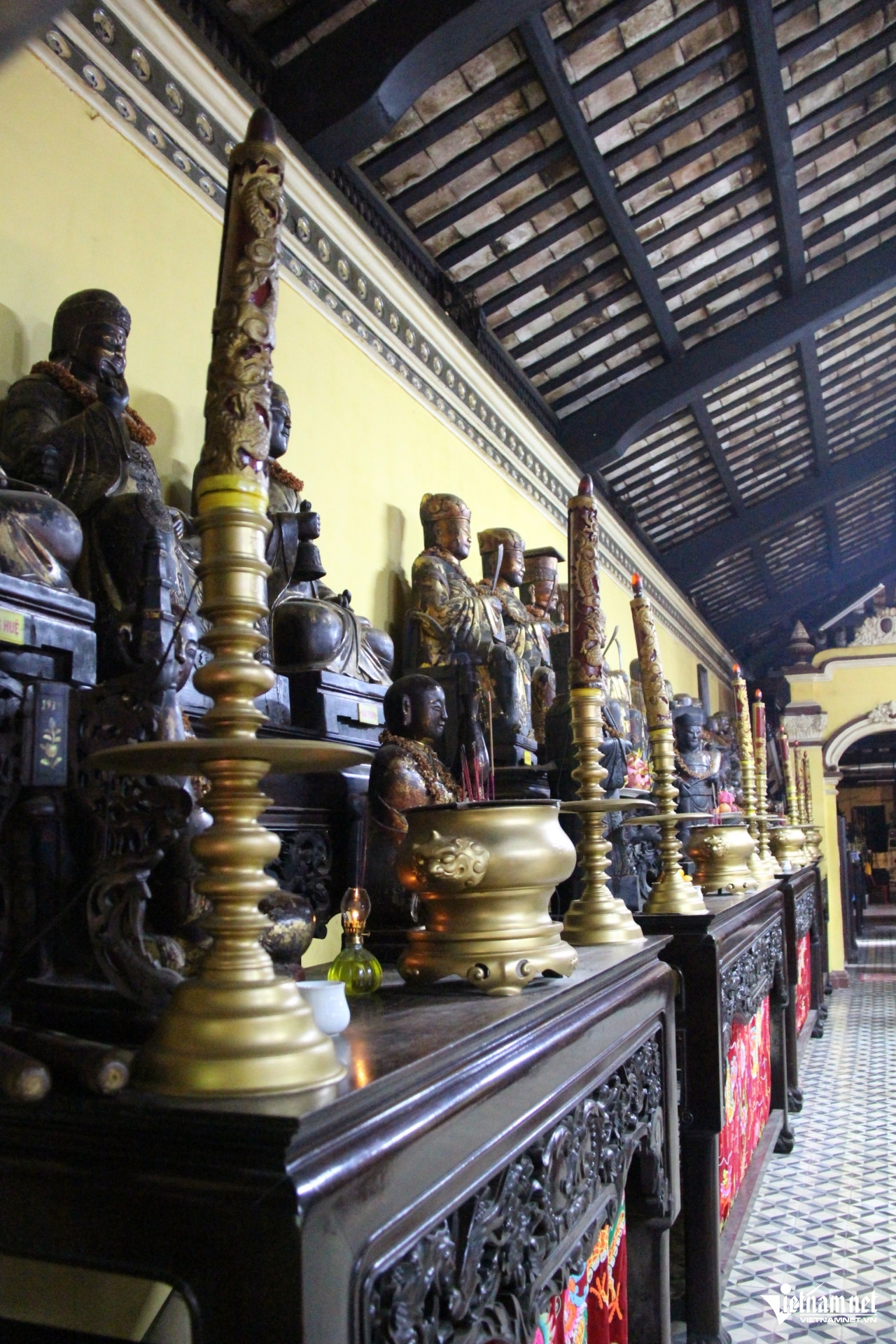
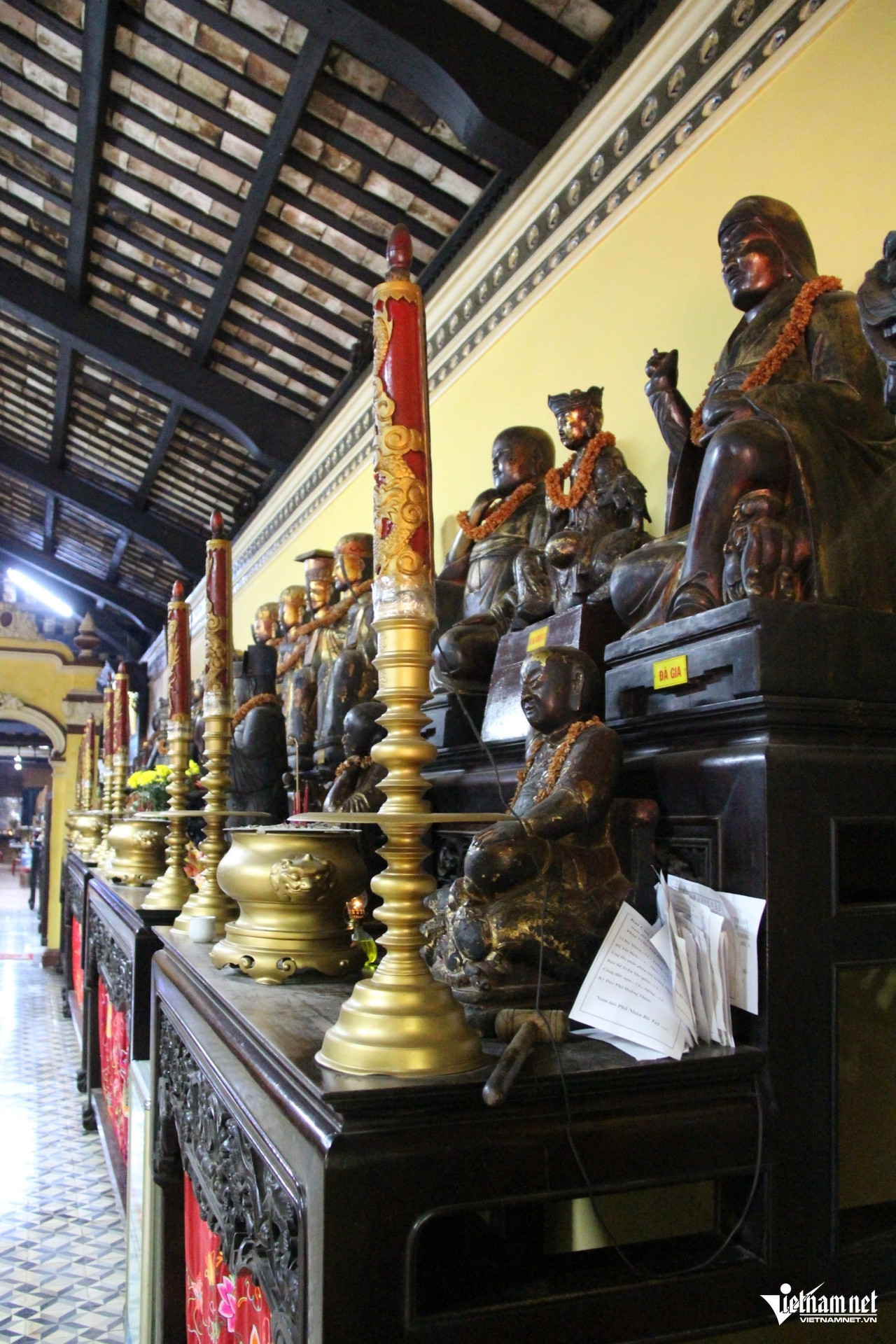
The side corridors of the main hall display statues bearing the marks of time. Photo: Ha Nguyen
To ensure the preservation of these precious statues, the pagoda regularly cleans and maintains them. During major Buddhist holidays, such as Buddha’s Birthday, the statues are meticulously cleaned and polished with utmost care,” the monk added.
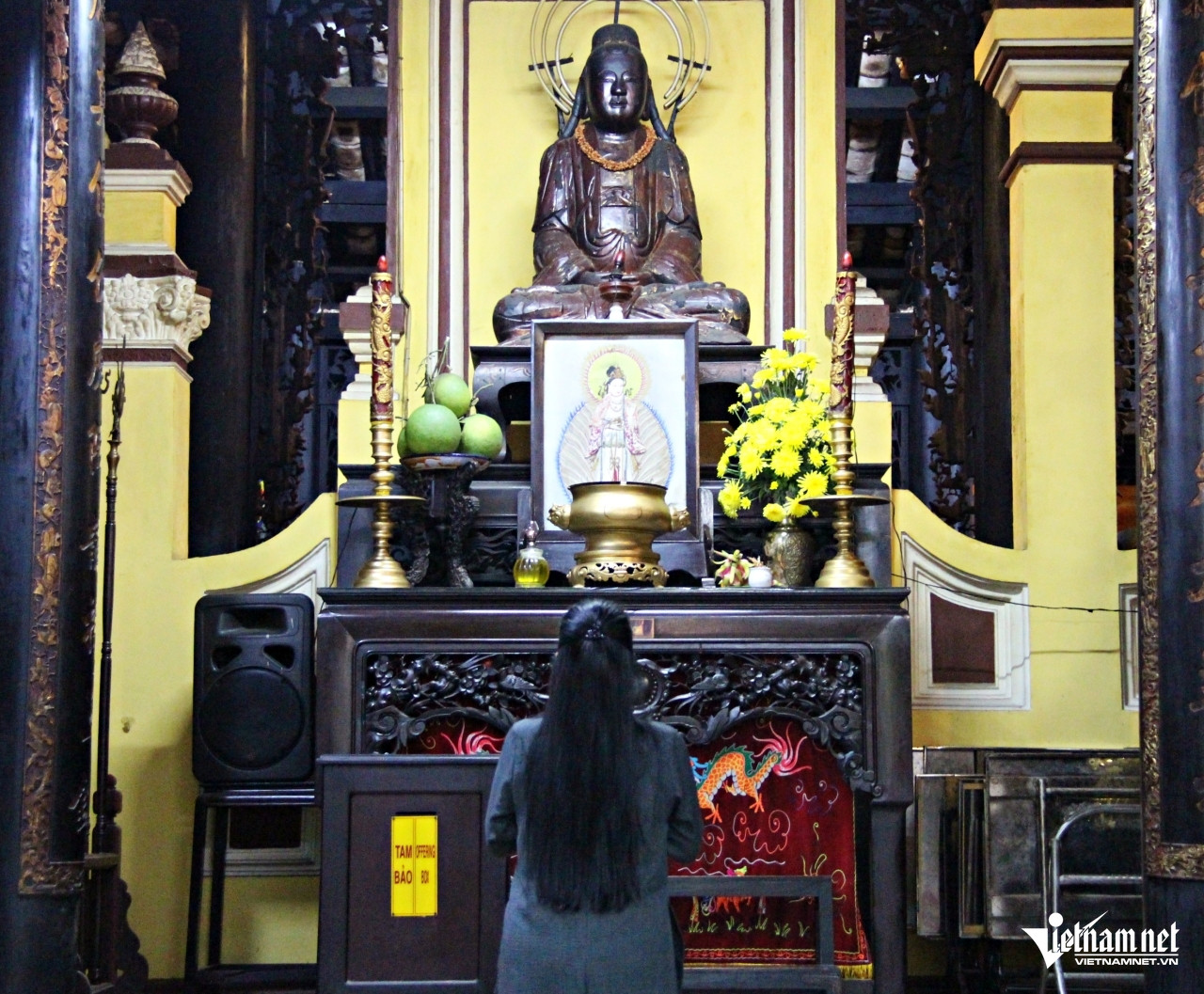

Visitors come to the pagoda for sightseeing and worship. Photo: Ha Nguyen
With its unique architectural features, ancient statues, and serene atmosphere, Giac Lam Pagoda attracts a steady stream of visitors each day, who come to explore its historic halls and pay their respects.






























